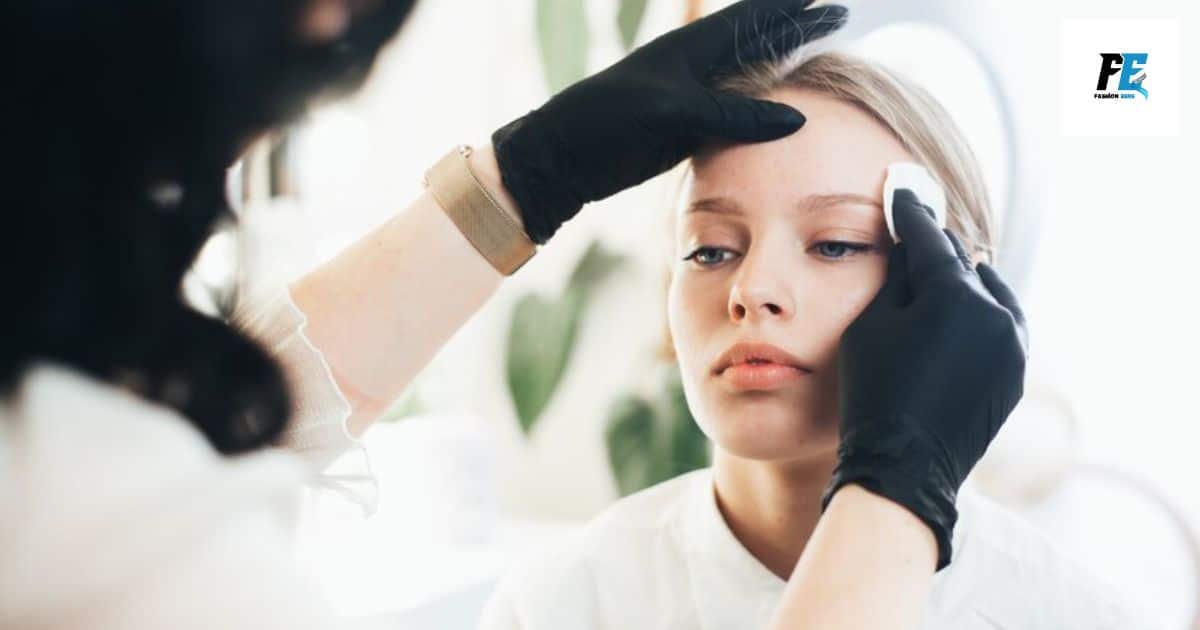Eyebrows play a significant role in framing your face and expressing emotions. For many, tattooed eyebrows are a popular way to define their look. Some regret getting tattooed brows later or want a change. Eyebrow tattoo removal can address this. The heavy makeup needed daily to darken fading brows becomes tiring.
You dream of waking up to well-defined brows without much hassle. Permanent makeup removal makes this possible by removing old tattoo pigments from the skin. The experienced technicians use a specialized procedure to target the ink beneath the skin. This minimizes irritation while breaking up the pigments into smaller fragments absorbed by the body over 6-8 weekly treatments.
Eyebrow tattoo removal costs $100-$200 per session, with most patients needing 6-8 sessions weeks apart. The financial investment yields great benefits by returning your brows to a natural look. You can finally ditch the daily brow makeup routine and have brows that compliment your face each morning.
What is Eyebrow Tattoo Removal?
Brow tattoo removal is a procedure to fade or remove permanent makeup from the eyebrow area.
It utilizes a precise laser treatment to target the pigment under the skin that was deposited during an eyebrow tattooing process. The goal is to safely break down the ink particles so they can be eliminated from the body.
Most patients see significant lightening of the tattooed area after multiple low-level laser sessions spaced a few weeks apart.
The Process of Eyebrow Tattooing
The process of Eyebrow Tattooing involves the following steps:
- Preparing the skin: To begin, the artist cleans and disinfects the eyebrow area to remove any dirt, oils, or previous makeup. This ensures the skin is sterile before the procedure.
- Choosing the pigment colors: The client works with the artist to select the proper shade and tones of pigment dyes based on their natural brow and hair color. This will mimic the look of filled-in eyebrows.
- Applying the pigment: Using fine hand tools and pigment colors, the artist begins depositing the dye into the dermal layer of skin in the brow area. A process similar to traditional tattooing is followed.
- Needlework: The tiny needle strokes puncture the skin with each motion to accept the pigment colors. This embedding process is repeated over the brow area to achieve the desired density and shape.
- Healing process: It will take 7-10 days for the brows to heal. During this time, clients must take care to prevent infection as the skin recovers and the pigment settles below the epidermis.
Benefits of Eyebrow Tattoo Removal
The benefits of eyebrow tattoo removal include the following:
- Achieve shaped brows again without makeup
- No daily makeup routine to maintain the tattooed look
- Savings on brow products over time
- Ability to change brow style if tastes change
- Regain control over brow appearance and daily look
- Safely eliminate unwanted permanent brow ink
Different Methods of Brow Tattoo Removal
Several removal methods exist to fade unwanted eyebrow tattoos. They target the colored pigments at varying depths under the skin.
Consulting a medical expert can help determine the best approach based on one’s individual needs. Dedicated removal treatments diminish the tattoo over multiple sessions.
Eyebrow Tattoo Laser Removal
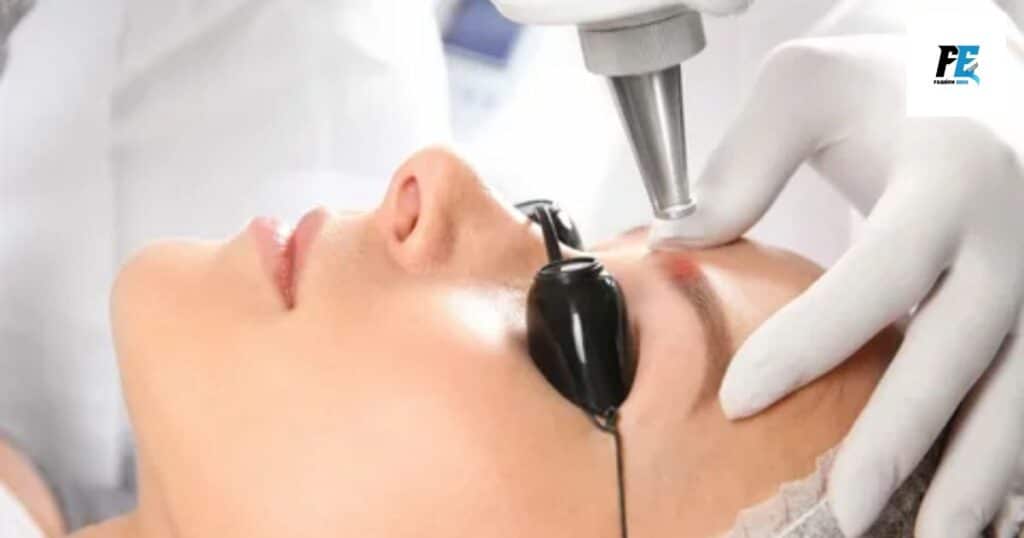
Laser removal utilizes a specialized laser handpiece to deliver targeted energy bursts at the pigment. This breaks up ink particles into smaller fragments that are absorbable by the body.
Most advanced lasers today cause minimal discomfort and yield great results. Several low-level sessions, usually several weeks apart, remove most signs of the tattoo.
Pros:
- The most effective removal method
- Precisely targets pigments under the skin
- Causes minimal discomfort with modern lasers
Cons:
- Multiple treatments needed weeks apart
- Costs more than other options
Chemical Eyebrow Tattoo Removal
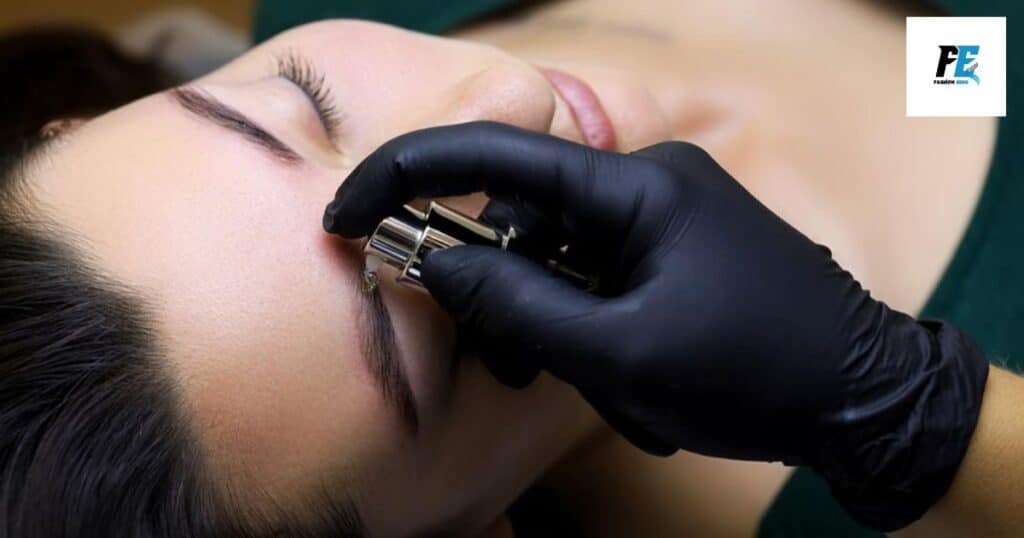
A dermatologist applies a mild chemical peel containing hydroxy acids or enzymes to the brows. This works to break down pigments near the surface of the skin.
The acids exfoliate dead skin to lighten the top color layer. It provides only minimal removal, and several peels may be needed with inconsistent success.
Pros:
- Gentle peel exfoliates surface skin and pigments
- Minimal discomfort during the procedure
Cons:
- Provides only minor fading of top pigment layers
- Multiple peels needed with inconsistent results
Microdermabrasion
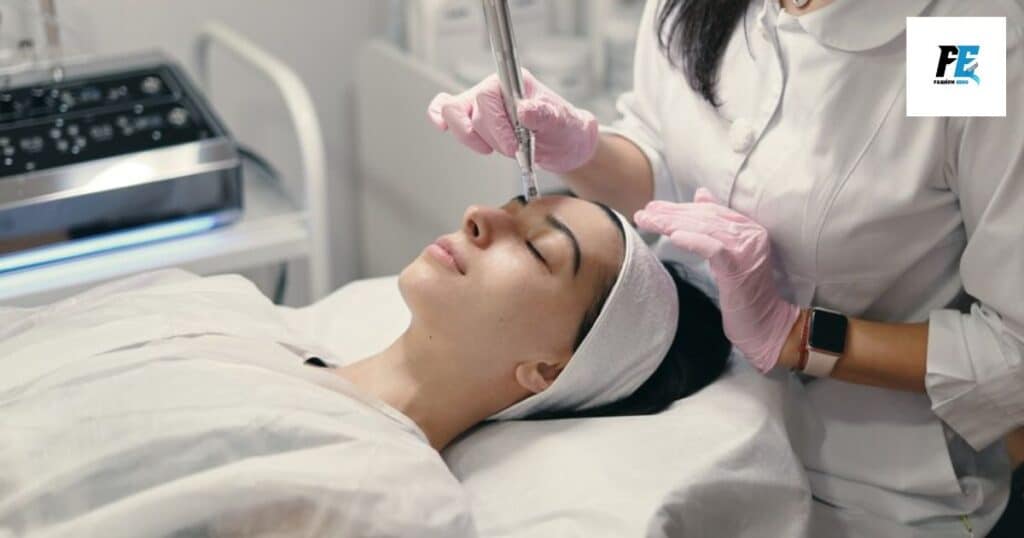
This non-invasive method uses an exfoliating handpiece with tiny crystalline particles to resurface brow skin. It polishes and removes some dead surface cells and pigment.
The ink is not completely removed, and fading takes longer, with multiple treatments providing subtle lightening over time.
Pros:
- Non-invasive and comfortable treatment
- Removes some surface pigment and dead skin
Cons:
- Incomplete removal of deeper ink
- Requires multiple sessions for gradual fading
Saline Solution
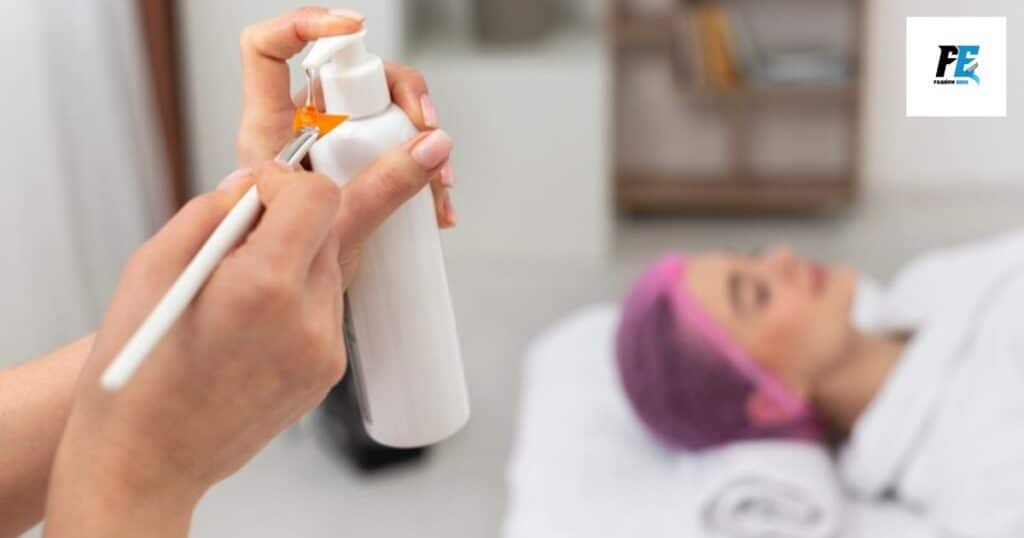
A physician injects a sterile saline solution into the brow tattoo area using an excellent needle. This method fails to break up ink since pigments sit deeper.
Saline rarely yields more than minimal fading, making it an ineffective standalone removal solution.
Pros:
- Very minimal discomfort
- Inexpensive option
Cons:
- Highly ineffective at removing pigment
- It provides only subtle fading of the tattoo
The Cost of Eyebrow Tattoo Removal
The cost of removal depends on the method selected and the number of treatments required.
- Laser removal costs $100-200 per session, with most seeing fading after 6-8 sessions spaced 4 weeks apart. The total cost is $600-1600 then.
- Chemical peels range from $150-300 each time and may require 3-5 rounds.
- Microdermabrasion costs $75-150 per 45-minute session, with fading taking 8-12 treatments.
Factors like a clinic’s location and equipment brand affect rates, too. Financing options can make the investment in removal affordable.
The Risks and Side Effects of Eyebrow Tattoo Removal
Removal aims to be a low-risk process. Some minor side effects can occur. Laser treatments may cause temporary swelling, redness, or darkening of the skin afterward.
Using the recommended post-care and protective eyewear reduces these. Chemical peels risk minor irritation or darkened skin if healing guidance isn’t followed.
Microdermabrasion could lead to slight temporary redness or flaking. Qualified professionals minimize discomfort when performing removal. Potential side effects are mild and fade within days for most patients.
Recommended Removal Method for a Faded Tattoo with a Limited Budget
If someone has a faded eyebrow tattoo and is on a limited budget, microdermabrasion is the removal method. Here are the key reasons:
- Faded tattoo: Since the tattoo is already faded, a more gentle or gradual method would likely be sufficient rather than a targeted option like laser removal.
- Limited budget: Microdermabrasion is one of the more affordable removal options compared to laser treatments or multiple chemical peels. It’s considered a non-invasive outpatient procedure.
- Gradual fading: Microdermabrasion provides subtle, gradual lightening of the pigment over multiple treatments. This would still get the job done for a faded tattoo, even if it takes longer than a laser.
- Comfort: It’s a very comfortable treatment for most patients compared to other alternatives. This is preferable for someone on a tight budget where they can’t accommodate much discomfort.
- Removes some pigment: While it may not remove the tattoo, taking off some of the faded surface pigment layers through microdermabrasion exfoliation would still make a visible difference cost-effectively.
Aftercare for Eyebrow Tattoo Removal
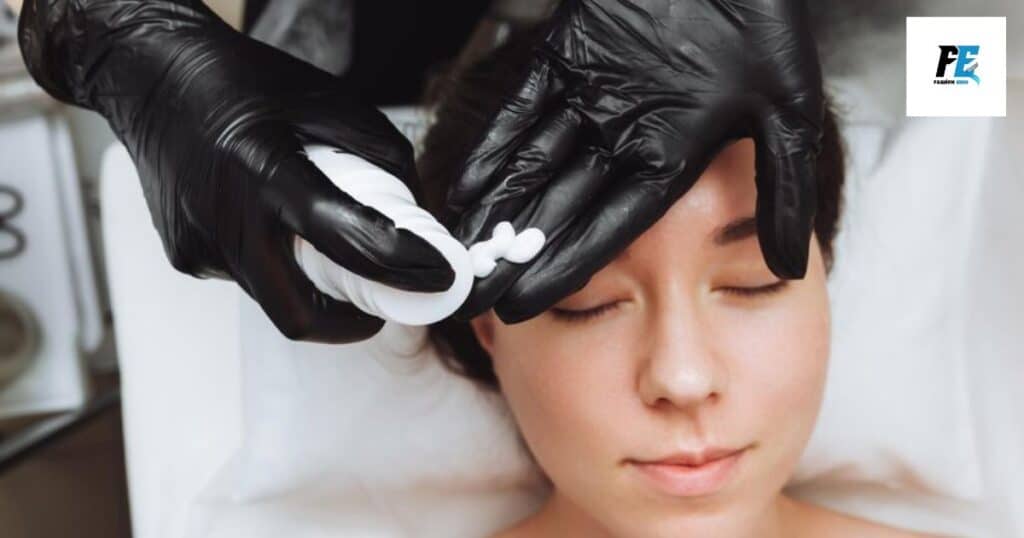
Taking proper aftercare plays a key role in your brow tattoo removal results. In the crucial days following treatment, your brows need adequate care to heal.
- Start by keeping the area clean. Gently wipe away any fluids with a cotton ball soaked in a mild cleanser. This will remove debris without irritating sensitive skin. Apply a cold compress for 15 minutes if swelling or redness occurs. The cold therapy soothes and reduces inflammation.
- Moisturize with a hydrating gel or cream. Aloe vera soothes and prevents flaking as pores mend. Look for fragrance-free products your technician recommends.
- Get plenty of rest and avoid strenuous activities that cause sweating. Exercise can wait a few days until healing is underway. Shield your brows from the sun’s harsh UV rays as well. Sun exposure may darken residual pigment spots.
- Schedule follow-up appointments as your provider has advised. Multiple treatments are needed weeks apart. Returning allows them to assess fading progress and answer any care questions.
With dedicated aftercare, your skin can focus its energy on removal rather than irritation. Gentle cleansing, moisturizing, and avoiding stress on the area optimize results and your comfort throughout the process.
FAQs
How long does the removal process take?
The number of treatments needed can vary, but most people see results after 6-8 laser sessions spaced 4 weeks apart. Fading continues for months after as the body eliminates pigments. Full clearance may take 9-12 months.
When can I see the results?
You should see some lightening of color after 3-4 treatments. Significant fading occurs by the end of the treatment plan. Results develop as the pigment is broken down over numerous sessions.
Is there scarring or damage to the brows?
No, when performed by a qualified professional, removal fades the ink without harming the surrounding skin or the eyebrow structure. Some temporary effects, like mild swelling or redness, are expected.
Will my eyebrows grow back naturally?
Yes, removal will return your brows to a natural look, but it will only make them grow back if they are sparse or bald. Hair regrowth is not a side effect. The goal is to eliminate surface pigmentation from tattooing.
How soon can I get retattooed after removal?
It’s best to wait at least 6 months after complete removal to allow the skin and follicles time to recover before any new tattooing. This minimized the risk of adverse reactions from multiple procedures in the same area.
Final Thoughts
This comprehensive article has outlined what eyebrow tattoo removal entails, the different options available, and what patients can expect from the process. While it requires dedication and time, removal provides a non-surgical solution for those seeking natural brows again without daily makeup routines.
With careful selection of a qualified clinic and diligent aftercare, most individuals can safely fade unwanted tattooed brows. Regaining control over this critical area of facial expression and the confidence that comes with it makes the temporary discomfort worthwhile.
Consult with a reputed removal expert to evaluate your needs, discuss timelines, and address any other questions you may have. Committing to the recommended treatment plan will deliver the fresh brow look you desire.

Welcome to Fashioneens! Your go-to destination for trendy fashion tips and style guides. Join us in exploring the latest in fashion trends and unleash your inner style icon!
